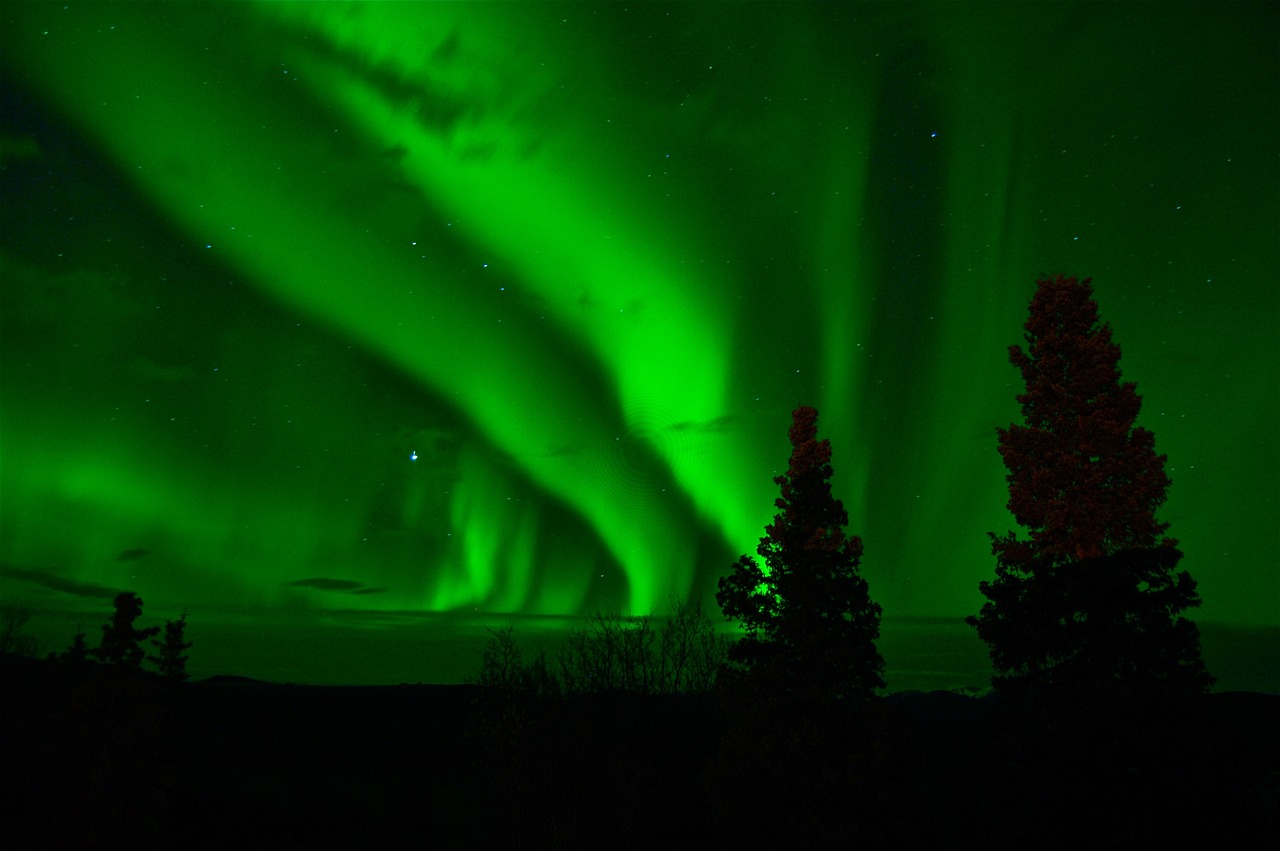The Northern Lights, also known as the aurora borealis, and the Southern Lights, called the aurora australis, are both stunning natural phenomena that captivate people across the globe. These lights create mesmerizing displays of colors and shapes in the night sky, but they occur in different parts of the world. What exactly sets them apart, and how are they similar?
In this article, we’ll explore the differences and similarities between the Northern Lights and Southern Lights, covering everything from where they appear to the best time to see them.

What Are the Northern and Southern Lights?
Both the Northern Lights and the Southern Lights are created by the interaction of solar winds with the Earth’s magnetic field and atmosphere. When charged particles from the sun collide with atoms and molecules in the Earth’s atmosphere, they release energy in the form of light. This light appears in different colors, often green, pink, or purple, creating the aurora displays that we see.
The primary difference between these two types of aurora is their location:
- The Northern Lights are visible in the Northern Hemisphere, especially in locations like Rovaniemi, Finland and other areas above the Arctic Circle.
- The Southern Lights are visible in the Southern Hemisphere, primarily in Antarctica and sometimes in parts of New Zealand and Australia.
Why Do the Northern Lights Appear in Rovaniemi?
The Northern Lights are most often visible in regions close to the magnetic North Pole, such as Rovaniemi in Finland. The geographic proximity to the Arctic Circle makes Rovaniemi a popular spot for aurora hunters looking to witness this natural wonder. If you’re curious about why this area is such a hotspot for the aurora, check out this detailed explanation of why the Northern Lights appear in Rovaniemi.
Geographic Location: North vs. South
The main difference between the Northern Lights and Southern Lights is their location.
The Northern Hemisphere
The Northern Lights, or aurora borealis, occur near the magnetic North Pole and are visible in countries like Norway, Sweden, Finland, Iceland, Canada, and Alaska. One of the best places to see them is Rovaniemi in Finland, which offers a range of activities for families and aurora chasers alike. In addition to seeing the lights, Rovaniemi is home to many other attractions, making it a great destination for a longer stay. You can explore more of what Rovaniemi has to offer in this guide to the best things to do in Rovaniemi.
The Southern Hemisphere
The Southern Lights, or aurora australis, occur near the magnetic South Pole and are mostly visible in Antarctica. They can sometimes be seen in the southern parts of New Zealand, Australia, and the Falkland Islands. The Southern Lights are less frequently seen by people because they occur in more remote, less populated areas compared to the Northern Lights.
Accessibility and Tourism
When it comes to accessibility, the Northern Lights have a clear advantage. Many Northern Hemisphere locations that are good for aurora viewing are accessible to tourists, with well-established infrastructure and activities to make the experience enjoyable for visitors. On the other hand, the Southern Lights are mostly visible from Antarctica, making them less accessible and more difficult to witness without extensive travel arrangements.
Visual Similarities and Differences
In terms of appearance, the Northern Lights and Southern Lights are virtually identical. Both produce stunning displays of light in shades of green, pink, red, yellow, and violet, depending on the types of gases involved and the altitude of the collision between charged particles and atmospheric atoms.
Colors and Patterns
The colors of the aurora are determined by the type of gases that are being energized by the solar wind. Green is the most common color, which is produced when oxygen atoms are excited about 60 miles above the Earth. Higher altitudes can produce red auroras, while nitrogen interactions can lead to purples and blues.
The patterns of the aurora—such as arcs, curtains, and rays—are also similar for both the Northern and Southern Lights. These shapes shift and dance across the sky, creating a moving light show that is beautiful to witness in either hemisphere. For tips on capturing the best photos of the aurora, take a look at this guide on photographing the Northern Lights.
Best Time to See Them
Whether you’re aiming to see the Northern Lights or the Southern Lights, timing is crucial.
Northern Lights Viewing Season
The Northern Lights are best seen during the dark, cold months between September and April. For more details on planning the best time to visit, check out our guide on the best time to see the Northern Lights in Rovaniemi. The optimal time of night is typically between 9 PM and 2 AM, when the sky is at its darkest, and the aurora activity is most intense.
Southern Lights Viewing Season
The Southern Lights follow a similar seasonal pattern, being most visible during the Southern Hemisphere’s winter months, from March to September. Like the Northern Lights, the best time for viewing is during the darkest part of the night. However, due to the remote nature of the Southern Hemisphere’s auroral zones, planning a viewing trip requires careful consideration of both timing and location.
Myths and Stories
Auroras, both northern and southern, have inspired countless myths and legends. Indigenous people across the globe have interpreted the lights in a variety of ways, attributing them to spirits, ancestors, or cosmic events.
Northern Lights Myths
In the north, many cultures saw the lights as symbols of spiritual beings or messages from ancestors. The Sami people of Scandinavia believed that the aurora was the energy of souls. Today, many people find seeing the aurora a deeply moving experience and often feel a connection to the natural world when witnessing this phenomenon.
Southern Lights Myths
While fewer myths and legends surround the Southern Lights due to their inaccessibility, indigenous communities in New Zealand and Australia have their own stories about the aurora australis. In Māori mythology, the aurora is known as “Tahu-nui-a-rangi,” meaning “great glowing of the sky,” often seen as a reflection of fires from the underworld.
The Science Behind the Phenomena
The underlying science behind both the Northern and Southern Lights is the same. Charged particles emitted from the sun during solar flares travel towards Earth and are drawn towards the poles by Earth’s magnetic field. When these particles collide with gases in the atmosphere, they emit light, creating the aurora.
The difference in where we see these lights—north or south—simply depends on which pole the charged particles are being drawn to. Learn more about how these phenomena occur in this informative guide on why the Northern Lights appear.
Conclusion
The Northern Lights and Southern Lights may occur in opposite hemispheres, but both offer breathtaking displays that inspire awe and wonder. While the Northern Lights are more accessible to most travelers, the Southern Lights provide an equally captivating experience for those adventurous enough to seek them out. The science, the colors, and the beauty are shared by both, making them remarkable examples of nature’s power and majesty.
